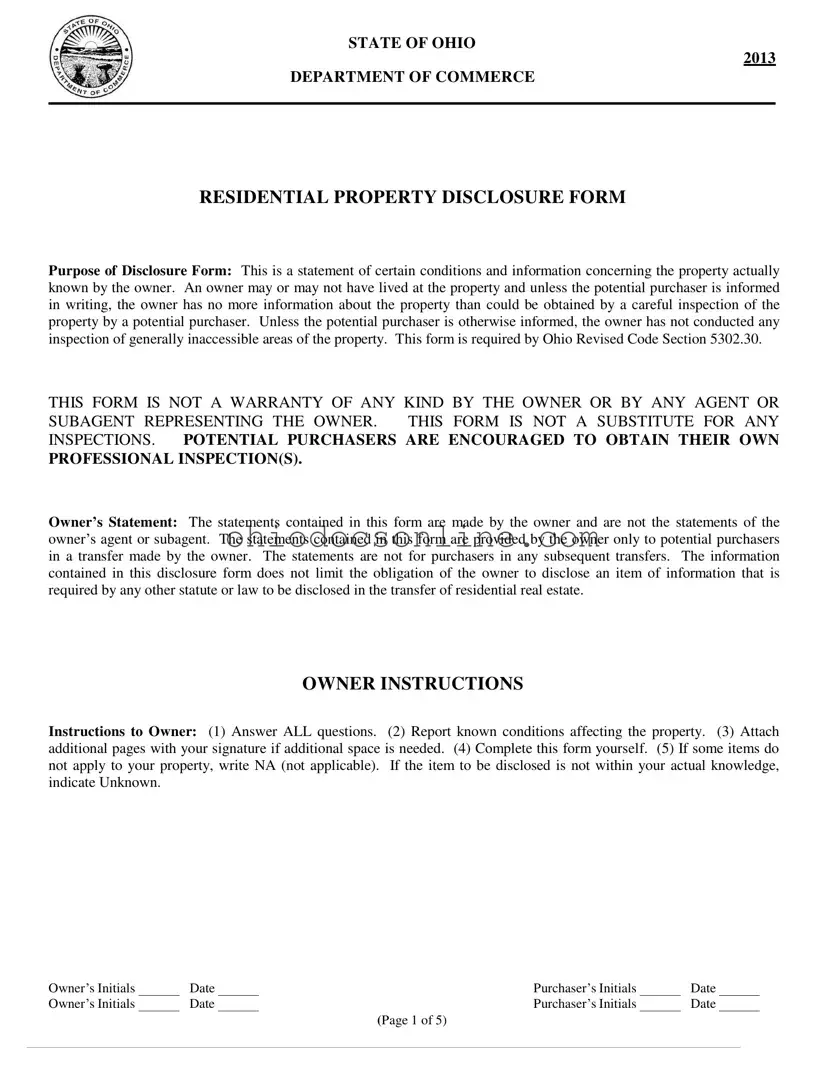Ohio Disclosure Template in PDF
The Ohio Disclosure Form is a crucial document designed to inform potential buyers about specific conditions and information regarding a residential property. This form serves as a statement from the property owner, detailing known issues and features that may affect the property's value or livability. Understanding this form is essential for anyone considering purchasing real estate in Ohio, as it outlines the owner's knowledge and responsibilities while encouraging buyers to conduct their own inspections.
Open Editor
